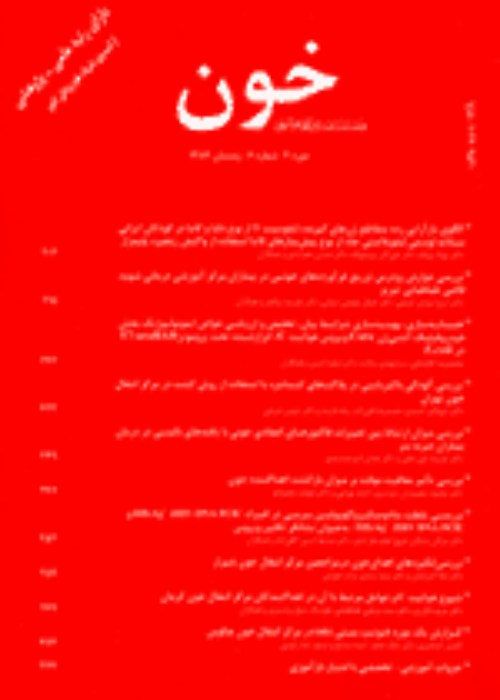Effect of recruitment of first time blood donors on donor return behavior in Isfahan
Author(s):
Abstract:
Background and ObjectivesInvestigations have shown that the safest blood is driven from voluntary regular blood donors. Because of the importance of blood safety, the main goal of blood transfusion organizations is to provide the safest blood. Hence, the recuritment of blood donors is of most importance. The aim of this survey is to determine the return rate of first time blood donors both with and without invitation cards mailed following the first blood attempt. Materials and MethodsIn a prospective study a questionnaire was handed out to the first time blood donors of Isfahan Blood Transfusion Center. After donation those with negative screening test results (HBsAg, HCV-Ab, HIV-Ab and RPR) were randomly divided into two groups. For one of these groups 3 to 4 months later an invitation card was sent to make an appointment for their next donation session, while the other group (control) did not receive any reminders. At least one year after the first donation attempt, repeat donations of the two groups were recorded. Results1500 questionnaires were distributed among first time blood donors out of whom 939 remained in the study (416 in the group for whom invitation card was sent and 523 in the control group). Frequency of blood donation after one year follow up was different in the two groups. Overall 117(28.1%) blood donors receiving the invitation cards and 114 (21.8%) donors in the control group did donate again. The difference came out to be significant by chi-square test (c 2=5.002, p=0.013). 25.6% of men and 13.6% of women had repeat donations which indicates a significant difference as analyzed by chi-square test (c 2=5.804, p=0.008). There was no significant difference in return rate of married and unmarried blood donors with or without an invitation card (c 2=0.067, p=0.21). Pearson's correlation showed no relation between age of the donors and return rate for the subsequent donation (r=0.012, p=0.27). Spearman's rank correlation shows no correlation between education level of the donors and return rate for subsequent donation (r=0.002, p= 0.96). There is no correlation between distance of donor residence from donation center and return rate for subsequent donation by Pearson's correlation test (r=0.021, p=0.53).ConclusionsRegular blood donation is one of the important steps in blood safety, hence retention of regular blood donors, and education and recruitment of sporadic and first time donors can increase the rate of regular donation leading to higher blood safety. This investigation showed that mail of cards three to four months after the first donation attempt to invite first time blood donors for subsequent blood donation is an easy and cost effective method to change them into regular blood donors.
Language:
Persian
Published:
Scientific Journal of Iranian Blood Transfusion Organization, Volume:3 Issue: 5, 2007
Page:
397
magiran.com/p480731
دانلود و مطالعه متن این مقاله با یکی از روشهای زیر امکان پذیر است:
اشتراک شخصی
با عضویت و پرداخت آنلاین حق اشتراک یکساله به مبلغ 1,390,000ريال میتوانید 70 عنوان مطلب دانلود کنید!
اشتراک سازمانی
به کتابخانه دانشگاه یا محل کار خود پیشنهاد کنید تا اشتراک سازمانی این پایگاه را برای دسترسی نامحدود همه کاربران به متن مطالب تهیه نمایند!
توجه!
- حق عضویت دریافتی صرف حمایت از نشریات عضو و نگهداری، تکمیل و توسعه مگیران میشود.
- پرداخت حق اشتراک و دانلود مقالات اجازه بازنشر آن در سایر رسانههای چاپی و دیجیتال را به کاربر نمیدهد.
In order to view content subscription is required
Personal subscription
Subscribe magiran.com for 70 € euros via PayPal and download 70 articles during a year.
Organization subscription
Please contact us to subscribe your university or library for unlimited access!


